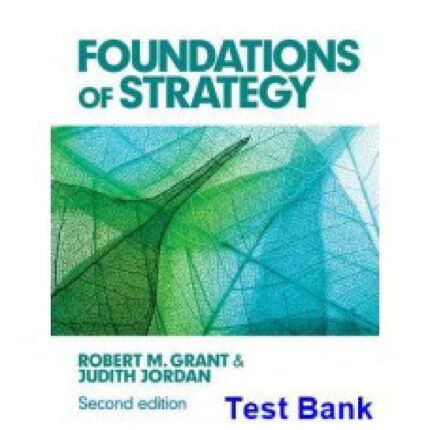Chapter 11
Organizational Structure and Controls
LEARNING OBJECTIVES
1. Define organizational structure and controls and discuss the difference between strategic and financial controls.
2. Describe the relationship between strategy and structure.
3. Discuss the different functional structures used to implement business-level strategies.
4. Explain the use of three versions of the multidivisional (M-form) structure to implement different diversification strategies.
5. Discuss the organizational structures used to implement three international strategies.
6. Define strategic networks and discuss how strategic center firms implement such networks at the business, corporate and international levels.
CHAPTER OUTLINE
Opening Case: Luxottica’s Dual CEO Structure: A Key to Long-term Success or a Cause for Concern?
ORGANIZATIONAL STRUCTURE AND CONTROLS
Organizational Structure
Strategic Focus: Changing McDonald’s Organizational Structure: A Path to Improved Performance?
Organizational Controls
RELATIONSHIPS BETWEEN STRATEGY AND STRUCTURE
EVOLUTIONARY PATTERNS OF STRATEGY AND ORGANIZATIONAL STRUCTURE
Simple Structure
Functional Structure
Multidivisional Structure
Matches between Business-Level Strategies and the Functional Structure
Matches between Corporate-Level Strategies and the Multidivisional Structure
Strategic Focus: Sony Corp.’s New Organizational Structure: Greater Financial Accountability and Focused Allocations of Resources
Matches between International Strategies and Worldwide Structure
Matches between Cooperative Strategies and Network Structures
IMPLEMENTING BUSINESS-LEVEL COOPERATIVE STRATEGIES
IMPLEMENTING CORPORATE-LEVEL COOPERATIVE STRATEGIES
IMPLEMENTING INTERNATIONAL COOPERATIVE STRATEGIES
SUMMARY
KEY TERMS
REVIEW QUESTIONS
MINI-CASE Unilever Cooperates with Many Firms and Nonprofit Organizations to Implement Its Strategy While Creating a More Sustainable Environment
ADDITIONAL QUESTIONS AND EXERCISES
MINDTAP RESOURCES
LECTURE NOTES
Chapter Introduction: As students will recall, the discussion in Chapter 10 described how governance mechanisms are used to align the interests of a firm’s top-level managers with those of the firm’s owners. It also described how those mechanisms influence the firm’s ability to execute strategies that have been implemented successfully as the firm strives to achieve a competitive advantage in the new competitive landscape. The same could be said of organizational structure, the focus of the current chapter.
OPENING CASE
LUXOTTICA’S DUAL CEO STRUCTURE: A KEY TO LONG-TERM SUCCESS OR A CAUSE FOR CONCERN?
Luxottica, the world leader in eyewear, has recently changed its organizational structure significantly by appointing co-CEOs. Long-term Procter & Gamble executive Adil Mehboob-Khan accepted the responsibility for distribution in the firm’s markets while long-time Luxottica manager Massimo Vian was appointed as co-CEO with the responsibility for products and operations. As you would assume, a dual CEO structure is very unusual, and critics believe that this structure cannot be successful. Critics also say that “The adoption of a co-CEO model is often a symptom of weakness. Having two people at the same level shows that the company is undecided about its leadership and it invites too much confusion.”
Luxottica officials claim that the dual CEO structure is for a strong strategic rational. Officials say that there is a new phase of development that will take advantage of opportunities in a competitive global market of growing complexity. Whatever the reason, Luxottica’s board must carefully monitor the firm’s performance of the company and actions of the co-CEOs and be prepared to make a change if evidence shows that the new structure isn’t in the company’s best interest.
Teaching Note
Ask the students to brainstorm about Luxottica’s current situation. Can a company have two CEO’s and be successful? What will need to happen in order for the co-CEOs to effectively run Luxottica. What can go wrong with this structure? If you had to run a business, would you choose this structure?
1Define organizational structure and controls and discuss the difference between strategic and financial controls.
The match or degree of fit between strategy and structure influences the firm’s attempts to earn above-average returns. Thus, the ability to select an appropriate strategy and match it with the appropriate structure is an important characteristic of effective strategic leadership.
The focus of this chapter is on the structure- and control-related issues of strategy implementation, including:
• The pattern of growth and changes in organizational structure experienced by strategically competitive firms
• The organizational structures and controls used to implement separate business-level, corporate-level, international, and cooperative strategies
• A series of figures to highlight the structures firms match with different strategies













Reviews
There are no reviews yet.